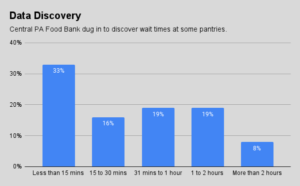Many food bank CEOs bring elements of their prior careers to their current jobs (as Food Bank News wrote about here). The background of Erik Talkin – a food bank CEO who is a former screenwriter and all-around creative person with a Master of Fine Arts – has led to the release of two food-justice books for children, adding to his first, which came out in 2020.
Talkin, who heads the Foodbank of Santa Barbara County, addresses healthy eating (Jesse and the Snack Food Genie) and local food systems (Frankie versus the Food Phantom) in his two latest books. They round out the first of the trio, which took on the issue of food insecurity from a child’s perspective (Lulu and the Hunger Monster).
The spooky themes conjured up by the genie, the phantom and the monster are intentional. “Kids love monsters, right?” Talkin said. “It’s a way of talking about something that is maybe difficult or complex.”
Talkin is an American who grew up in England, thanks to his father’s Navy job. After running a production company in London, he moved to California to become a screenwriter, and ultimately embraced non-profit work. For the past 16 years he has headed up the food bank.

Childhood experiences inform Talkin’s current work and writing as much as his creative background. Talkin’s father served on Navy submarines, a post that led him to become a talented cook. “On a submarine, you have to have good food or people kill each other and things,” Talkin noted. His dad’s culinary skills gave Talkin a much greater awareness of the importance of healthy food and how to stretch a budget.
In what could be described as a version of performative art, Talkin every two years takes on a food insecurity challenge that requires him to live on the daily SNAP allotment (last time it was $6.26 per day). Talkin does the challenge for a full month. Usually, after two to three weeks, he is forced to rely on food distributions from pantries (which he doesn’t actually take, but purchases the equivalent of). “It’s a way of highlighting the need for the services we provide,” Talkin said.
Talkin’s next challenge will be coming up in February 2024. Often, he adds in a related theme – one year it was sleeping in his car, another in a homeless shelter. “A month is a meaningful amount of time,” he noted. “A month begins to kind of chip away at you.”
Talkin’s books, which are published by Free Spirit Publishing, can be purchased for $16 on the food bank’s website, with $8 from each sale going directly to the food bank. Talkin expects schools to be a sweet spot, as well as food banks that purchase them in bulk to give to donors or volunteers. His first children’s book, Lulu and the Hunger Monster, sold 17,000 copies, which is a significant amount in the book world.
Taken together, the books walk readers through a progression: the basic need for food security, the need for the food to be healthy, and how kids can engage in local food systems. As Talkin put it, “Once our own situation is sorted out, how can we look out into the community, and sort things out there?” – Chris Costanzo
Like what you’re reading?
Support Food Bank News
This article was made possible by the readers who support Food Bank News, a national, editorially independent, nonprofit media organization. Food Bank News is not funded by any government agencies, nor is it part of a larger association or corporation. Your support helps ensure our continued solutions-oriented coverage of best practices in hunger relief. Thank you!
Connect with Us:










